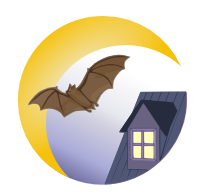Red bat

Credit: J. Froidevaux / F. Fabianek
Latin name: Lasiurus borealis
Average size: Total length of 9-11 cm
Wingspan: 29-33 cm
Weight: 8-18 g
External characteristics: Males have a red-orange coloured coat, whereas the coat of females is a mixture of yellow and maroon. Fur colour is a distinguishing characteristic of this species. The hair on its back, chest, and shoulders is white and there is a white patch under its chin. The eastern red bat's uropatagium is covered with thick fur. Their ears are hairy, round, and lack a black border (in contrast to hoary bats). The tragus is short and wide. The red bat has long, thin wings that are covered with hairs that extend all the way to the wrist. In general, males are more colourful than females.
Habitat: This species is found most commonly in the eastern United States and in eastern Canada as far west as Saskatchewan, and more recently, Alberta. They live in coniferous forests as well as mixed forests. They prefer to roost near the tops of trees suspended from branches, where they can easily be mistaken for dead leaves or cones. When hunting, they can be found flying close to sources of water, fields, or urban areas. In the fall, red bats migrate towards the central and southern United States, and even as far as Mexico.
Reproduction: Mating occurs in flight while they are migrating south in the fall. Litters of 1-4 pups are born each year, but typically there are only 2 offspring born to each female. The gestation period is between 80 and 90 days and the young are born between May and July.
Seen in: Alberta, Manitoba, New-Brunswick, Northwest Territories, Nova-Scotia, Ontario, Quebec, Saskatchewan

